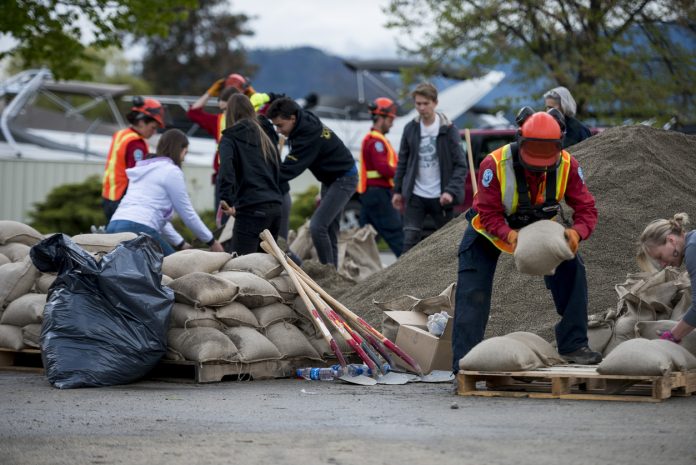Dr Abedeh Gholidoust, Associate Professor at the University Canada West, discusses how effective urban resilience modeling can contribute to developing smarter and more inclusive climate policies in Canada
Flooding has become Canada’s costliest natural disaster, even as it’s more frequent and severe than it has been in memory, thanks to climate change. The Federal Government’s recent $3.3 million investment in advanced flood mapping is a welcome turn toward risk reduction.
“Flooding is already the most costly natural disaster in Canada, and climate change is expected to make flooding more frequent and more severe in the future. By investing in cutting-edge flood mapping and bringing together experts from across sectors, we’re helping communities better understand their risks and build a safer, more resilient future for Canadians and their families,” said The Honourable Julie Dabrusin, Minister of Environment and Climate Change. (1)
However, while flood forecasting and geospatial data are critical, they must be combined with a deeper understanding of how such climate risks ripple through the interconnected systems of everyday urban life, particularly for Canada’s most vulnerable communities.
Urban resilience is derived not only from hazard exposure. It is about how systems react, adapt and evolve under stress. No longer is the question only where the waters will rise, but what it will break when they do, and for whom. That is where a systems-based, data-informed strategy becomes necessary.
How can Canadian climate policy be strengthened?
Spearheaded by Prof Amir Albadvi, the Urban Resilience and Sustainability Alliance (URSA) is a pioneering data-driven initiative at UCW that integrates resilience planning with socio-economic realities at the city scale. Developed in collaboration with A. Shaikh, A. Gholidoust, A. Shelikhova, M. Ghodrat, and M. Pourmoradnasseri, the URSA project offers critical insights for strengthening Canadian climate policy through urban-scale, system-based analysis.
The URSA project in Vancouver utilizes graph databases and complex network analysis to identify map interdependencies among urban resilience indicators. It highlights essential socio-economic bottlenecks like access to healthcare and digital infrastructure as critical rather than peripheral to climate resilience.
Conventional flood maps show water
This approach reveals the latent interconnections that determine how a single shock, such as an extreme flood, reverberates through housing security, public health, energy infrastructure, and access to care. This insight should prompt policymakers to revisit the assumptions underpinning Canada’s climate strategy. At present, climate resilience efforts often focus on hard infrastructure and technical adaptation measures (e.g., flood barriers and energy retrofits). Canada’s enhanced flood mapping initiatives signify a notable advancement.
Still, these need to be linked with decision-support systems that can model how the various systems in our urban spaces interact under duress. Without that kind of knowledge, local governments and emergency planners are left with geospatial risk zones and without the knowledge to invest limited resources in ways that strengthen the resilience of the entire urban fabric. These findings make a compelling case for embedding socio-economic resilience at the core of climate policy.
The URSA framework also contributes to the operationalization of stakeholder analysis, focusing on equity as part of resilience. This inclusive lens ensures that resilience planning reflects lived realities and addresses systemic inequities – an essential consideration in climate justice. Notably, “voiceless” stakeholders were found to contribute unique perspectives that enhanced the quality of planning. This is particularly relevant in urban contexts where climate risk occurs in combination with historical patterns of marginalization, precarious housing, or neglect of infrastructure.
Canada’s climate framework can benefit from structured stakeholder integration
Canada’s climate framework would benefit from adopting this form of structured stakeholder integration. Policy design that prioritizes technical or governmental stakeholders’ risks reinforces existing power imbalances and overlooks the perspectives of those most vulnerable to climate impacts. As climate risks intensify, Canadian cities require more than data alone – they need actionable tools.
The URSA methodology also presents a scalable model for cross-jurisdictional climate planning. With its secure, role-based access structure and flexible database design, it enables cities to model their own resilience systems while preserving data sovereignty. This is particularly relevant for Canada, where municipalities bear the brunt of climate adaptation responsibilities, but often lack consistent tools or guidance to align with national targets.
A federated model of resilience analytics, deployed through a shared platform but customized by jurisdiction, could fill this gap – supporting municipalities without undermining autonomy. Yet, the Vancouver case study also highlights obstacles that Canadian climate policy must address. Data standardization, especially for qualitative or “soft” indicators (e.g., trust in government, institutional collaboration), remains a barrier.
Many jurisdictions lack consistent data on housing precarity, digital access, or mental health – factors that deeply influence climate resilience. Moreover, political resistance to data sharing and institutional silos hinders the integrated approach that complex systems require. Overcoming these hurdles will demand a policy shift toward open data ecosystems and stronger inter-agency collaboration.
Should Canada’s climate policy evolve toward adaptive governance?
Finally, the URSA project reminds us that resilience is not a fixed outcome but a dynamic process. The network analysis revealed that urban systems evolve through feedback loops and cascading effects, where small disruptions can produce large system-wide consequences. Canada’s climate policy must similarly evolve toward adaptive governance – policies that can learn from emergent risks, redistribute resources dynamically and recalibrate based on real-time insights.
In conclusion, we urge policymakers, funders and municipal leaders to consider resilience not merely as a matter of preparing people and places for future challenges, but as an opportunity to design more innovative and equitable systems – before the next flood occurs. With strategic investments in modelling, mapping, and equity, Canada has the potential to lead in building climate-resilient cities that do more than withstand shocks: they learn from them, adapt and ultimately thrive.











